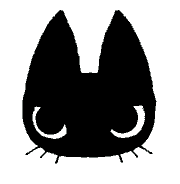- Moxiette Poplucia

- Aug 7, 2019
- 2 min read
Although the artistically soft beauty of this impressionistic work can hardly be denied, with its dreamily blurred lines and muted tones, neither can the inherently dark subject matter. The print has been oriented in a landscape perspective, with the horizon stretching across the lower fourth of the page. Stippled about, there along the ground and up the sides of the parchment are waving brushstrokes of gray, brown and blue pigment, indicating a position deep within a rocky gorge, where the light of day is only scarcely visible some great distance above the chasm. In the depths of the pit, however, amidst the rubble and the gravel, sprawls a massive serpent. Its scales perfectly tessellate by the hundred, each colored a matte obsidian where nary a glimmer can survive immediate absorption. Despite the beauty of the creature, however, and its inherent size which must equal the height of two trolahks stacked atop each other, it currently finds itself gravely wounded, and generally covered in scrapes and fallen dust. The snake's abdomen has suffered significant trauma and oozes carmine hues from a lesion, there, perhaps the result of being heaved downwards amongst jagged stones. Whatever damage it sustained prior, whatever might weaken such a beast that it would be vulnerable to such a sorry state, remains a mystery, although the wonderings would likely take one's mind to harrowed places.
And yet. A serpent's tricks are many, and this one, in particular, has not yet exhausted his. In the leftmost, shadowy corner of the painting, the serpent's arrow shaped head can just faintly be discerned, though it is notably free from wear. It's glossier, even. It would stand to reason, then that the creature has been depicted midway through shedding its skin and, miraculously, its old injuries to be born anew.
The reverse side of the page is written on with small script, probably by a tiny hand, to read:
"The Nocturnal Heart"
Moxiette Poplucia, 6/26/1519

Comments